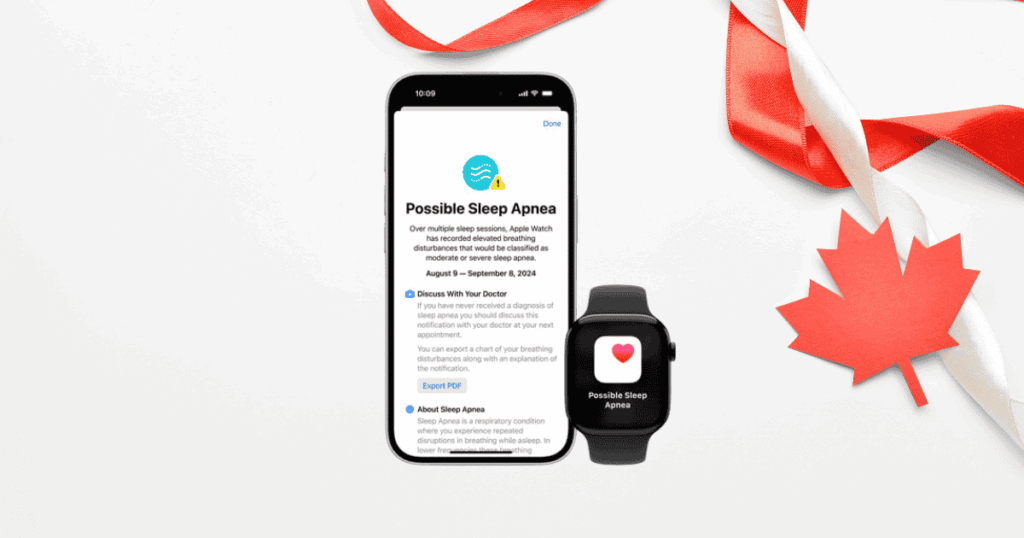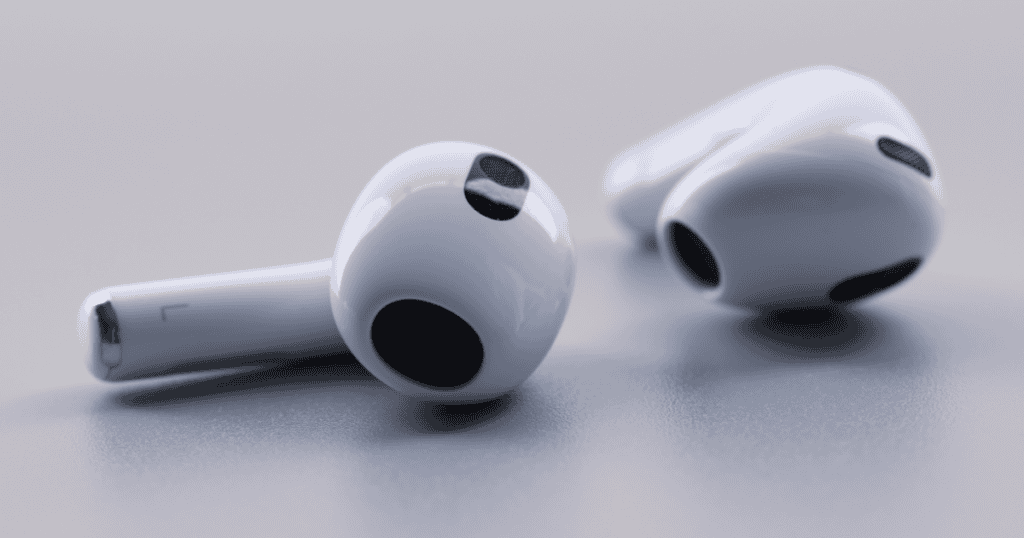Health Canada’s recent approval of sleep apnea detection for the Apple Watch marks a significant advancement in wearable health technology. This feature, designed for the Series 9, Series 10, and Ultra 2 models, employs sophisticated machine learning algorithms to analyze users’ sleep patterns and identify potential breathing disturbances. With sleep apnea affecting over a billion people worldwide—many of whom are undiagnosed—the implications of this development extend beyond individual health. As we explore the potential benefits and challenges of integrating such technology into daily health management, questions arise about its broader impact on public awareness and healthcare practices.
Overview of the Approval
Following a thorough evaluation process, Health Canada has officially approved the sleep apnea detection feature for the Apple Watch, significantly enhancing its health monitoring capabilities.
This feature is compatible with the Apple Watch Series 9, Series 10, and Ultra 2 models, marking a pivotal advancement in wearable health technology. The approval comes after the U.S. FDA granted similar authorization, indicating a growing recognition of the importance of proactive health management in sleep disorders.
The sleep apnea detection feature employs the watch’s accelerometer to monitor wrist movements during sleep. By analyzing these movements, it can identify potential breathing disturbances that may indicate moderate to severe sleep apnea.
This capability is particularly crucial, given that sleep apnea affects over 1 billion individuals worldwide, often going undiagnosed.
Health Canada’s endorsement not only validates the effectiveness of this technology but also paves the way for its anticipated rollout in Canada.
Users can expect notifications regarding the feature’s availability once the launch date is confirmed, empowering them to take control of their sleep health and address a critical health issue effectively.
How Sleep Apnea Detection Works
Understanding how the Apple Watch detects sleep apnea involves a sophisticated integration of technology and health monitoring. The device employs its built-in accelerometer to monitor subtle wrist movements during sleep, which can indicate breathing disturbances. By analyzing this data every 30 days, the Apple Watch is capable of identifying signs of moderate to severe sleep apnea among users.
The detection process relies on advanced machine learning algorithms that have been validated through clinical studies, enhancing the accuracy of sleep apnea detection. When the Apple Watch identifies persistent breathing irregularities, it sends alerts to the user through the health app, encouraging them to seek medical advice.
This proactive approach is crucial, as sleep apnea affects over 1 billion people worldwide and can lead to serious health issues if left undiagnosed.
Compatible with the Apple Watch Series 9, Series 10, and Ultra 2, this feature is part of the watchOS 11 update, reflecting a commitment to improving personal health management.
Benefits for Users
The introduction of sleep apnea detection in the Apple Watch offers users significant benefits by enhancing their ability to monitor sleep health effectively. This innovative feature empowers individuals to take charge of their well-being through improved awareness and timely intervention.
- Personal Health Awareness: Users can track their sleep patterns and identify potential breathing disturbances, fostering a deeper understanding of their health.
- Timely Alerts: The Apple Watch analyzes wrist movements every 30 days, providing alerts that encourage users to consult healthcare professionals for potential sleep apnea signs.
- Proactive Health Management: By raising awareness about sleep apnea, users are motivated to adopt a proactive approach to their health, potentially leading to early diagnosis and treatment.
- Improved Health Outcomes: Early detection of sleep apnea through this technology can significantly enhance health outcomes by addressing untreated conditions linked to serious health issues like hypertension and type 2 diabetes.
Incorporating sleep apnea detection into the Apple Watch not only enhances the user experience but also promotes a culture of health vigilance, allowing individuals to manage their health more effectively.
Impact on Health Management
Transformative advancements in technology, such as the Apple Watch’s sleep apnea detection feature, are reshaping health management for millions. By identifying moderate to severe sleep apnea in undiagnosed adults, this feature not only enhances personal health awareness but also supports preventive healthcare initiatives. The ability to monitor wrist movements and analyze breathing patterns every 30 days fosters early detection, allowing users to seek timely medical advice and interventions.
The implications for health management are profound, as early detection can mitigate risks associated with sleep apnea, including hypertension, type 2 diabetes, and cardiovascular diseases. This proactive approach encourages users to engage with their health data, making informed decisions that can lead to better health outcomes.
| Aspect | Traditional Methods | Apple Watch Detection |
|---|---|---|
| Detection Frequency | Diagnosis after symptoms | Data analyzed every 30 days |
| User Engagement | Passive awareness | Active monitoring |
| Preventive Healthcare | Limited access | Immediate alerts |
This integration of technology within health management systems signifies a crucial shift towards more effective and accessible preventive healthcare strategies.
Global Availability and Future Plans
With the growing emphasis on proactive health management, the global availability of the Apple Watch’s sleep apnea detection feature marks a significant step forward in addressing this widespread health issue. Approved by Health Canada, this feature is set to roll out soon for compatible models, including the Apple Watch Series 9, Series 10, and Ultra 2.
Currently, the sleep apnea detection capability is already accessible in over 150 countries and regions, including the United States and the United Kingdom. This broad implementation underscores Apple’s commitment to enhancing health monitoring technology.
Key aspects of this initiative include:
- Early Detection: Alerts users to potential moderate to severe sleep apnea.
- Global Awareness: Aims to raise awareness about sleep apnea, which impacts more than 1 billion people worldwide.
- User Feedback: Future updates and enhancements will be influenced by user experiences and technological advancements.
- Health Monitoring Expansion: Apple is dedicated to broadening the range of health monitoring features in its devices.
As the rollout progresses, the Apple Watch’s sleep apnea detection feature is poised to become an invaluable tool in the global fight against sleep-related health issues.
Comparisons With Other Devices
Comparing the Apple Watch’s sleep apnea detection feature to other devices reveals distinct advantages in its approach to health monitoring. Unlike traditional sleep apnea devices that primarily measure airflow or require extensive polysomnography, the Apple Watch employs advanced machine learning and accelerometer data to monitor wrist movements and analyze breathing irregularities. This innovative method not only enhances the accuracy of sleep apnea detection but also integrates seamlessly with the existing health data available through the Health app on iPhone.
While competitors like the Oura Ring and various fitness trackers offer general sleep tracking capabilities, they often fall short in diagnosing specific sleep disorders such as apnea. The Apple Watch sleep apnea detection feature focuses on alerting users to potential health issues, promoting proactive engagement in their physical and mental wellbeing.
Moreover, the credibility bolstered by FDA and Health Canada approvals distinguishes the Apple Watch from its competitors, including Fitbit and Garmin, which are also exploring similar health metrics.
Ultimately, the Apple Watch’s unique combination of diagnostic capabilities and user-friendly integration positions it as a leader in the wearable health technology market.
User Experiences and Feedback
As users begin to explore the Apple Watch’s sleep apnea detection feature, many report a heightened awareness of their sleep health and overall well-being. This innovative capability not only promotes proactive health management but also enhances user engagement with their nightly habits.
Feedback from early adopters highlights several key aspects of their experiences:
- Informed Insights: Users appreciate the straightforward categorization of Breathing Disturbances in the Health app, allowing for easy tracking and understanding.
- Enhanced Awareness: Many users express that the feature has prompted them to prioritize their sleep health, recognizing its vital role in overall wellness.
- Desire for Additional Features: Early adopters have indicated a strong interest in further capabilities, suggesting that the platform should evolve to meet user expectations.
- Concerns Over Compatibility: Some users worry that older Apple Watch models may not support upcoming functionalities, potentially limiting their long-term relevance.
MacReview Verdict
The recent approval of sleep apnea detection for the Apple Watch marks a significant advancement in wearable health technology. By leveraging sophisticated algorithms to monitor sleep patterns, this feature not only enhances user awareness of potential health issues but also contributes to broader public health initiatives. As more individuals gain access to this technology, the potential for timely diagnoses increases, ultimately transforming sleep apnea management and improving overall health outcomes for millions worldwide, illuminating a path toward better sleep health.




